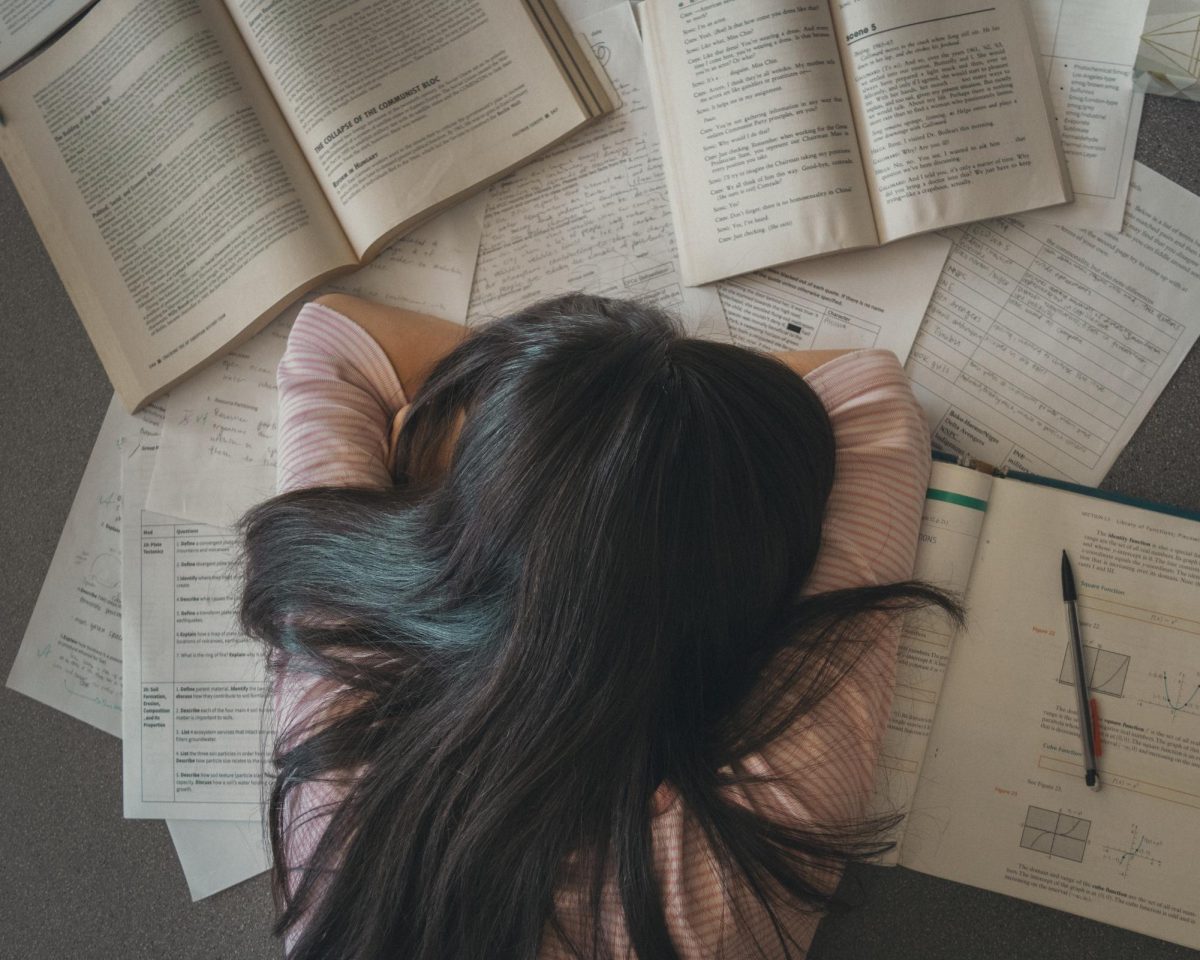Editorial
Sophomore Lucy Webb finishes playing hockey in PE and heads to the dance studio for her seventh block advanced dance class. She warms up with plies, tendus and Rond de Jambes and learns a new dance combination. Class ends at 2:25 p.m., but Webb stays in the studio for another three hours of practice with Dance Company. Her daily schedule is comprised of eight classes, her Tuesday workout beginning at 12:30 p.m. and continuing through 5:30 p.m. “I come out of Company dripping with sweat,” she said. “It’s a huge workout. I’m not given a break.” However, despite the rigor of her two dance classes, neither count toward Physical Education credit.
While not all sophomores in dance have schedules quite as challenging as Webb’s, taking dance in conjunction with PE can present scheduling challenges. According to Lowell dance teacher Wendy Jones, students are often interested in taking intermediate dance as sophomores in order to dive deeper with faster, more intense classes. Unfortunately, many aren’t able to find time in their schedules to pursue dance. “They’re taking PE so it’s like they are doubling up in movement studies,” Jones said.
Four levels of dance are currently taught at Lowell, and while each offers rigorous exercise, none count as the PE credits required to graduate. The dance classes fulfill the California Physical Education standards and can easily be supplemented with independent study PE. Therefore, the district should allow dance to count as PE for intermediate courses and higher.
“They’re taking PE so it’s like they are doubling up in movement studies.”
In order to meet California high school PE standards, courses must align with eight primary requirements provided by the California Board of Education: aquatics, combative, effects on physical activity on dynamic health, gymnastics and tumbling, individual and dual sports, mechanics of body movement, rhythm and dance, and team sports.
One major reason behind dance not currently qualifying for PE is that it only covers the “dance” high school PE requirement, according to PE department head Michael Prutz. Prutz explained that if the state was to check dancers’ transcripts it would seem as though they were lacking in the other physical categories such as weight training, which are covered in traditional PE classes.
Like dance, none of these compartmentalized classes fulfill the eight criteria, yet they count toward PE credit while dance does not.
However, in recent years, Prutz has been working on gradually incorporating more compartmentalized classes into the curriculum for second-year PE students, enabling sophomores to substitute general PE with specific activities they are passionate about. As of this year, the school offers former electives, such as racket sports, yoga and soccer as PE courses to sophomores during Arena, and Prutz is considering the addition of a semester-long combatives class. Like dance, none of these compartmentalized classes fulfill the eight criteria, yet they count toward PE credit while dance does not.
Another reason that dance doesn’t count as a PE course is that it counts as a Visual and Performing Art. The PE Department is wary that students would take advantage of the dual credit provided by dance class in an attempt to cut PE just to make space in their schedules, according to Prutz.

To address this concern, only counting the intermediate class and higher levels of dance as PE would effectively dissuade students from attempting to take the “easy” way out of PE. This rule would require students to go beyond the VPA Dance 1 requirement and work on more challenging exercises in the upper-level classes. “In beginning dance, you’re just learning coordination,” said Company co-captain and senior, Nicolina Arellano. “But in intermediate, advanced and Company, you’re using that technique to build up strength. You’re able to do a lot more, you’re a lot stronger, your stamina builds up and you’re able to dance more.”
PE classes must also meet California Physical Education Standards. These multifaceted guidelines include the ability to combine and apply movement patterns, participating in challenging physical fitness activities using the principles of exercise to meet individual needs and interests, and participating in physical activities for personal enjoyment, according to the California State Board of Education.
Lowell’s dance courses are congruent with these standards. Classes push dancers each day with extensive warm-ups, including abdominal centric pilates and yoga, technique-based skill development, aerobic drills comprised of turning, kicking and jumping across the floor, and the memorization of dances called combinations. Webb attested to the classes’ physically rigorous nature. “It’s definitely cardio,” she said. “Plies work all of your leg muscles and sometimes it’s like I didn’t even know I had a muscle there, and it hurts the next day. I can already see I’m getting a lot stronger even after just a couple of months in advanced and Company.”
The idea of dance as PE is not unheard of. According to George Washington High School dance teacher Nina Mayer, who has been teaching there for 20 years, sophomores at Washington used to be able to take dance for PE credit. Although the State of California issues the overarching PE requirements, the San Francisco Board of Education has the power to make exceptions as to which courses it considers PE. During 2012 and 2013, the school board reversed the program, once again allowing only traditional PE classes and the Army Junior Reserve Officer Training Corps (JROTC) to count for PE credits. “I think it is ridiculous to make some exceptions (JROTC) but not include but not include dance as an option,” Mayer said in an email. “Dance covers much of the curricular content covered in 10th grade PE classes.”
According to Mayer, the program ended because GWHS, Lowell and SOTA are the only high schools in the city offering multiple levels of dance, and SFUSD wants to keep the PE curriculum consistent. But according to the SFUSD PE Department´s website, several specialized courses — including racket sports, soccer and yoga — are offered only at Lowell, so clearly exceptions to the curriculum can be made.
One exception to the curriculum is JROTC, a program run in cooperation with the Army focused on character education and leadership. It was accepted throughout SFUSD as independent study PE in 2009 and 2010 without replacing any PE teachers, according to JROTC manager Doug Bullard.
Independent study PE involves students recording the time they’ve spent doing various exercises which meet the eight standards and going over their logs with an adviser. This approach provides more flexibility for JROTC cadets, who have demanding training and school schedules. “You know some freshmen, they want to take a language, they want to take a VPA, they take PE, and are doubling up in math,” Bullard said. “Where do they fit all this stuff in? This program gives students the option of taking an elective they may want to take and opens up that block.”
The issue of dance not meeting all of the high school standards can be overcome by instating an independent study program similar to that of JROTC. Dancers could work on fitness logs, incorporating the other seven requirements outside of class, as proof of the depth of their physical education. However, it is worth noting that students enrolled in other specialized PE classes like yoga and soccer are not required to complete independent study, even though they don’t meet all the standards either.
“I think that people that dance seriously or know a lot about dance don’t hesitate to consider it as a sport, or as difficult as a sport.”
The stigma surrounding dance as a serious form of exercise is also hindering its acceptance as a PE class. “I think that people that dance seriously or know a lot about dance don’t hesitate to consider it as a sport, or as difficult as a sport,” said junior Company member Bel Mehaffy. “You have to push your bodies to do things that are very hard and you have to make it look good while you’re doing it.” Despite this, according to Webb, people often dismiss dance as a less serious sport and deem it ineligible for its own PE class when compared to options like swimming and soccer. “Obviously, it’s a different kind of exercise from wrestling or something like that, but I couldn’t do what wrestlers do, and wrestlers couldn’t do what we do,” she said. Although dance is often underestimated as exercise, intermediate and higher classes meet the same standards as the specialized PE courses. These classes should count towards PE credit, so sophomores like Webb are not left with excessively strenuous schedules.











